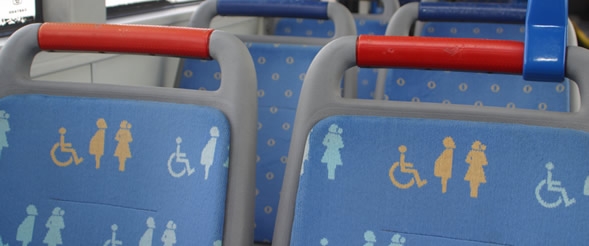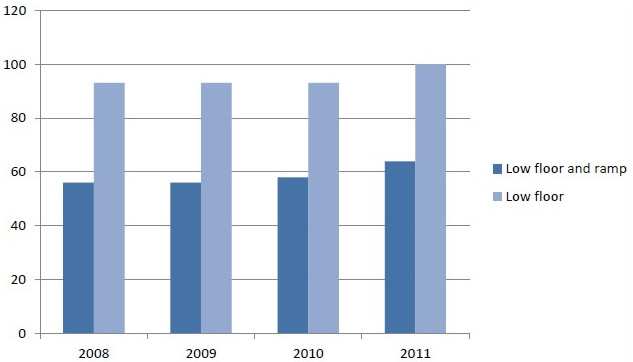
|
Unlike many other transport operators delivering services and assisting customers with special needs, however, isolated from the remaining population and restrained to meet the demand with scarce resources, STCP followed an integration policy and implemented a far-reaching public transport system for mobility-impaired passengers. The company has already achieved a target, that is, an accessible transport network 100% made up of low floor buses and 66% of buses equipped with ramp. Besides, STCP follows a policy focused on the promotion of social inclusion and accessibility for everybody providing information to all customers with special needs and cooperating with municipalities and other authorities responsible for the public area where STCP operates. |
STCP’s EASY ACCESS NETWORKIn July of 2007 after the reconfiguration of the public transport network as from the 1st January, STCP implemented an Easy Access Network currently covering 62 of 70 lines which are run by STCP buses, 37 of which with ramp vehicles ( 11 Late Night Lines are covered). Out of these 70 lines which are operated by STCP buses, 37 – more than 50% - make access easier for wheelchair users, by using 268 buses fitted with automatic ramp and allocated wheelchair space with seat belt. This bus network is complementary to both light rail and overground train networks in order to further improve mobility provided.
Easy Access Network is duly identified and was disclosed to boost mobility of people who usually did not rely on public transport. In 2011, this network covered 100% of the lines operated by STCP, only historical tram lines being now excluded as well as lines operated on a subcontract basis. Particularly noteworthy is that, at the end of the same year STCP’s entire fleet was made up of 468 buses and 5 historical trams, totalling 473 vehicles.  AUDIO AND VISUAL ANNOUNCEMENTSAll buses provide audio-visual display screens giving final destination information, line number as well as next stop. Illuminated signalling system and electronic display screens have been installed on board. With this information system, blind, partially sighted and deaf people are more easily provided orientation enabling them to make a smoother journey like anyone else.
Audio and visual information in detail implemented on board by STCP across its network, is listed below: Audio announcements:
MUNICIPALITIES AND ENTITIES INVOLVED IN THE NETWORK IMPLEMENTATIONThe following municipalities are covered by the accessible public transport network: Porto, Matosinhos, Maia, Valongo, Gondomar and Vila Nova de Gaia.
The undermentioned representatives of mobility-impaired citizens together with STCP were involved in the implementation of this network:
|